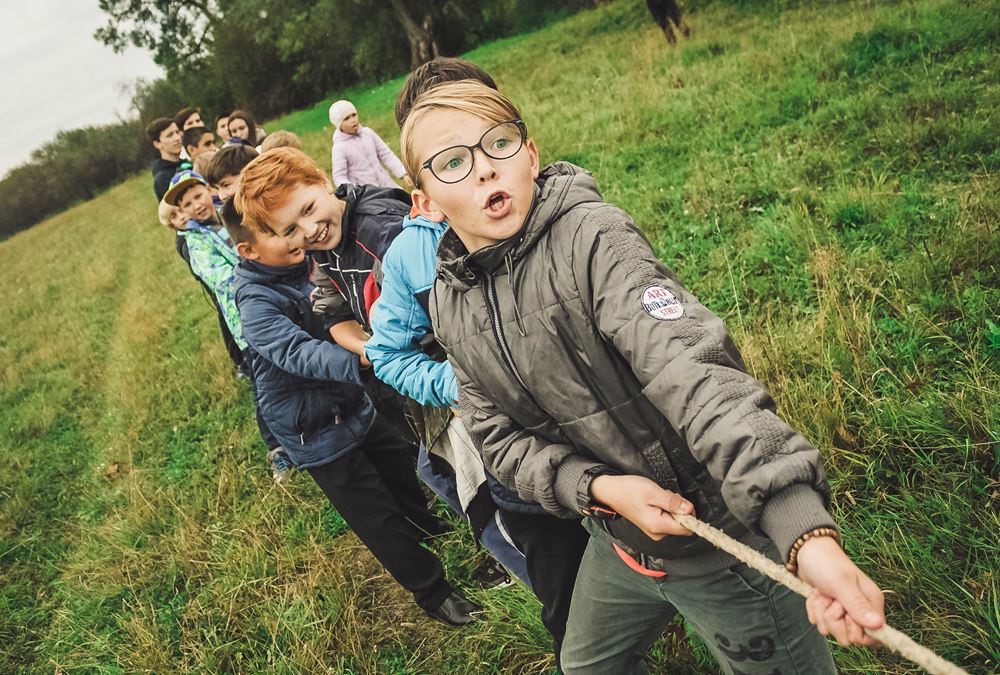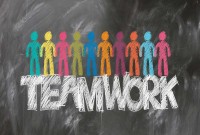- Home
- Business Processes
- Industry Knowledge
- Aerospace Industry
- Automotive Industry
- Banking Domain
- BFSI Industry
- Consumer/ FMCG Industry
- Chemicals Industry
- Engineering & Construction
- Energy Industry
- Education Domain
- Finance Domain
- Hospitality Domain
- Healthcare Industry
- Insurance Domain
- Retail Industry
- Travel and Tourism Domain
- Telecom Industry
- Leadership Skills
- eLearning
- Home
- Leadership
- Team Leadership
- Storming Stage of Team Development
Storming Stage of Team Development
Storming is the second stage of team development and this stage is characterized by a bid for power and inter-personal conflicts. Learn the key factors that occur in the storming stage and the strategies that a team leader can adopt to pass this stage of high winds
Managing Team Conflicts in the Storming Stage
Storming is the second stage of team development and in this stage, members start competing for status, leadership, and control in the group. When group members get to know each other better, the storming stage begins. This stage is characterized by a bid for power. Every team will move through this phase. Some will stay here longer than others. During the Storming stage, conflicts arise as team members try to figure out their roles and delegate tasks. This stage can be difficult, but it can also be highly productive.
Characteristics of the Storming Stage:
Key factors that occur in the storming stage for the team members might include:
- Individuals understand others' behavior and assert their role in the group.
- Team members may compete for a certain role or position on the team.
- The leader’s authority may be challenged as others compete for the position.
- As a result inter-personal conflict starts.
- Members try to resolve the issues related to the task and working relations.
- They also resolve the issues related to the role of the individual in the group.
- Roles and responsibilities get clarified to a certain extent.
- The rules and ways of working as a team start to be defined.
- The team still lacks established processes.
- The team lacks strong interrelationships with their colleagues.
- Some members may feel overwhelmed by how much there is to do.
- Some members may also feel uncomfortable with the approach being used.
- Some may even start questioning the appropriateness of the goals of the team.
- Some may start resisting taking on tasks.
- Members will begin to open up but also confront each other on ideas.
- Can be painful to team members who are reluctant to deal with conflict.
- Politeness tends to begin to wear off and dissension can occur over.
- Control often becomes the primary issue.
- Disagreements can be either very obvious or subtle.
- Sharp fluctuations in attitude about the team and the project's chance of success.
- Arguing among members even when they agree on the real issues.
Managing Conflict during Storming:
As team members struggle over roles and responsibilities, conflict can arise. But it can also be a highly creative stage as ideas are generated and challenged, and important issues are discussed. Identify what some of the problems are they will need to solve. If they're to move to the next stage, team members must learn to voice disagreement openly and constructively while staying focused on common objectives and areas of agreement. During the Storming stage, to help team development, you should focus on team building to ensure that people can get to know one another and not get stuck in seeing each other as competitors.
Suggestions for the Team Lead/Member in this stage:
To make sure that Storming results in positive growth, the team leader needs to:
- Establish process and structure
- Ensure that everyone stays on track with the team's goal, and
- Help the team define a shared vision
- Work to smooth conflict and build good relationships between team members.
- Allow and encourage productive conflict.
- Need to remain professional and objective.
- Allow each member to share their ideas or ask for input.
- Be open to every team member's input
- Help members to understand and appreciate the other members’ knowledge and skills.
- Generally provide support, especially to those team members who are less secure.
- Remain positive and firm in the face of challenges to your leadership or the team's goal.
- Perhaps explain the phases of team development so that people understand why conflict's occurring, and understand that things will get better in the future.
- Compliment team members.
- Review team goals and ground rules
- Address problem behaviors
- Check processes regularly
- Assure the team of progress
- Apply conflict management techniques
Every team will move through this phase. Storming is the most difficult stage for a team to weather, and this is the stage when many teams fail. Some teams may stay here longer than others. Storming is necessary for healthy team development. When team members begin to trust one another enough to air differences, this signals readiness to work things out.
Related Links
You May Also Like
-
A good leadership style is something that every effective leader must have in order to succeed, but identifying what that entails or does not entails might be difficult to understand. Most of the research on leadership focuses on the exemplary, best practices, and positive attributes of effective and successful leaders. This article talks about a new approach to learn leadership using lessons from bad leadership. That is the lessons to be learned by examining leaders who have not effectively exercised their power, authority, or influence.
-
Storming Stage of Team Development
Storming is the second stage of team development and this stage is characterized by a bid for power and inter-personal conflicts. Learn the key factors that occur in the storming stage and the strategies that a team leader can adopt to pass this stage of high winds
-
Generating Ideas using SCAMPER
SCAMPER is an activity-based thinking process that can be performed by Cooperative learning. SCAMPER is an acronym that provides a structured way of assisting students to think out of the box and enhance their knowledge. This can be used in the organizational context as a technique for creative problem solving and as a toolkit to generate fresh ideas.
-
Time management is the process of planning and exercising conscious control of time spent on specific activities, especially to increase effectiveness, efficiency, and productivity. The best time management techniques improve the ways you work. Time management refers to managing time effectively so that the right time is allocated to the right activity. Learn more about the five steps for effective time management viz. study, identify, analyze, decide, and implement.
-
Tips for Effective Time Management
After studying and analyzing how time is spent, why time is wasted, and where time is wasted you need to decide about the changes required for effective utilization of time. For this purpose, a large number of remedial measures can be taken by you. The first and foremost determinant of a planned and purposeful utilization of time is to develop consciousness of the value of time at all levels of the organization. Planning, goal setting, and defining priorities are concerns to addressed immediately.
-
Have you ever noticed how we express ourselves or interact with each other? Have you ever wondered what communication is and what role it plays in our lives? One may wonder if communication is so omnipresent and integral to our lives, why study communication at all? We need to study communication because it is a complex process that consists of many elements and is also beset with a number of barriers and there is a need to remove the barriers so that the communication process is effective.
-
A manager or an employee in an organization who is experiencing a high level of stress may develop high blood pressure, ulcers, irritability, difficulty in making routine decisions, loss of appetite, accident proneness, and the like. These can be subsumed under three general categories, physiological, psychological, and behavioral symptoms. Stress can give rise to a number of changes.
-
Teams are part of the modern organizational culture. Whether you are a team leader or a team member, having a better understanding of how teams work, and being able to identify where the team is in the process, is a critical part of ensuring the team is ultimately successful. Start with the basics and understand what a team is and what role they play in an organization.
-
“Level 5 Leadership”, this term was coined by Jim Collins in his book “Good to Great” and it is all about achieving "Greatness" as a leader. This article will explain what we mean by Level 5 Leadership and what the characteristics of a Level 5 leader are. What it takes to achieve greatness as a leader, and what are the steps and strategies that one can use to move up to this top level of leadership.
-
Facilitative Leadership is all about involving the employees in the decision-making process at all levels enhancing their sense of ownership, responsibility, and motivation. Facilitative leadership style uses a number of indirect communication patterns to help the group reach consensus and build commitment for the decision taken. To be effective in modern organizations, managers need to become facilitative leaders, learn what it means to be a one.
Explore Our Free Training Articles or
Sign Up to Start With Our eLearning Courses

About Us
Learning
© 2023 TechnoFunc, All Rights Reserved










